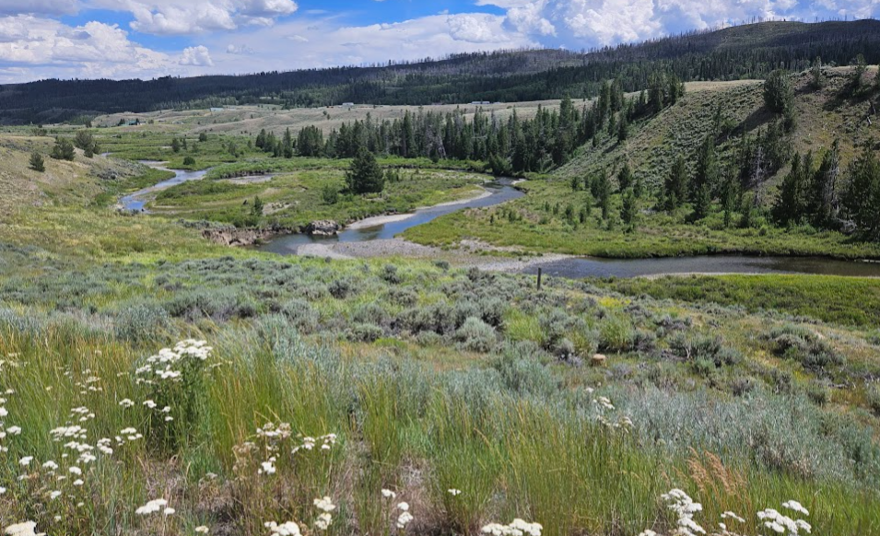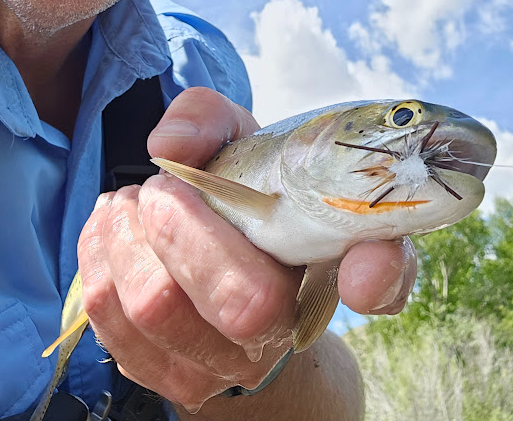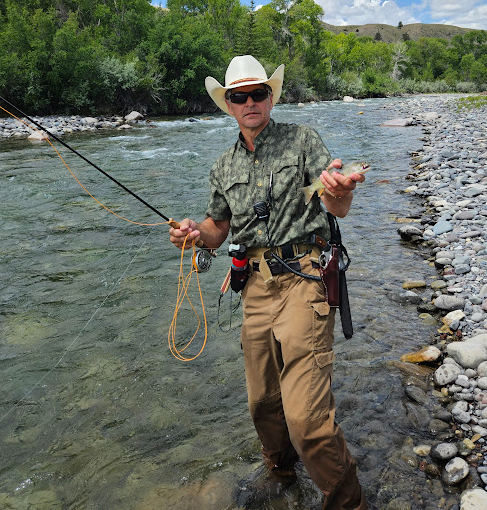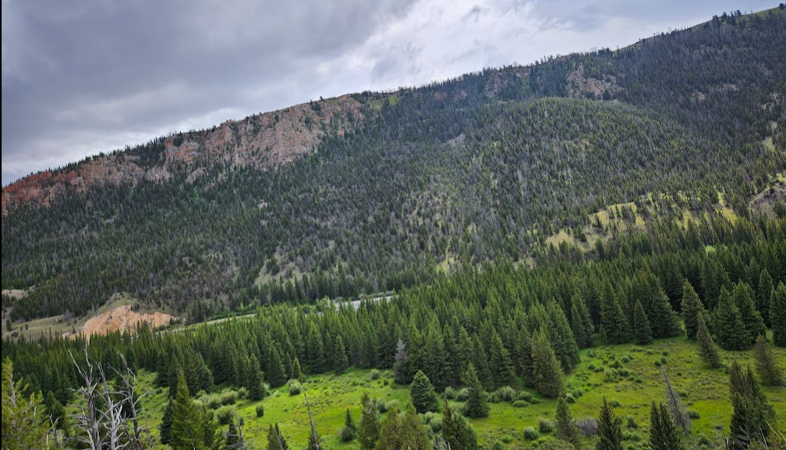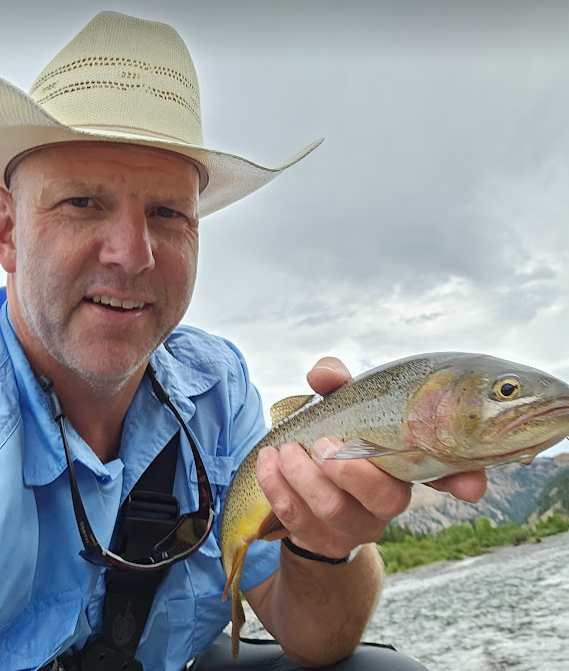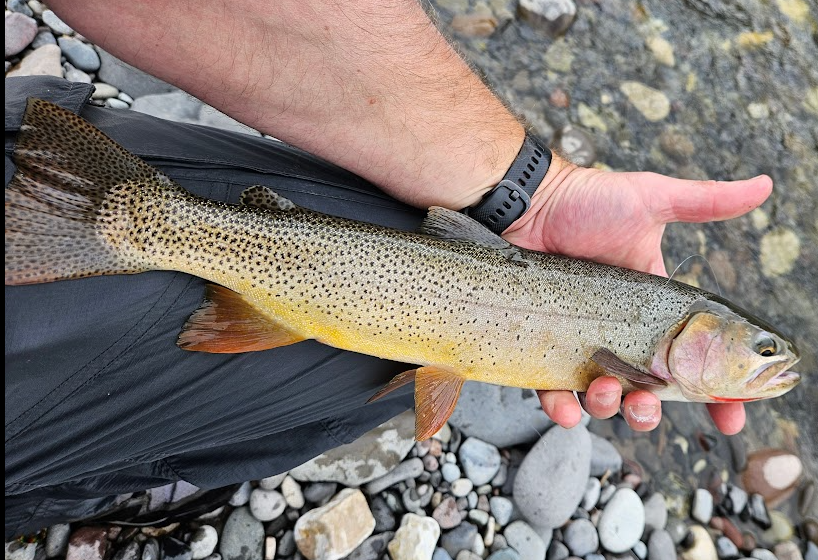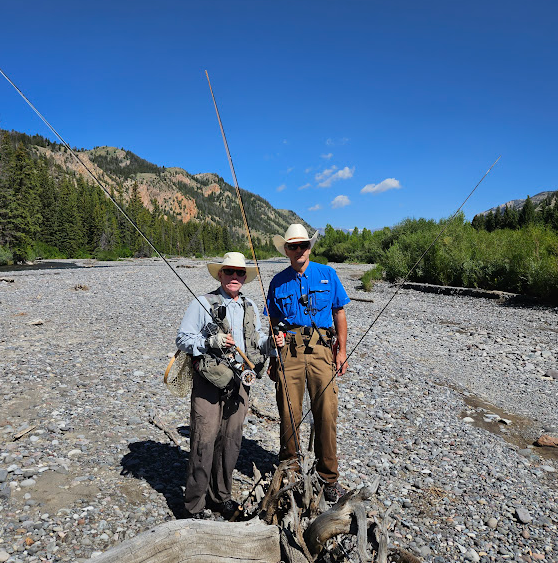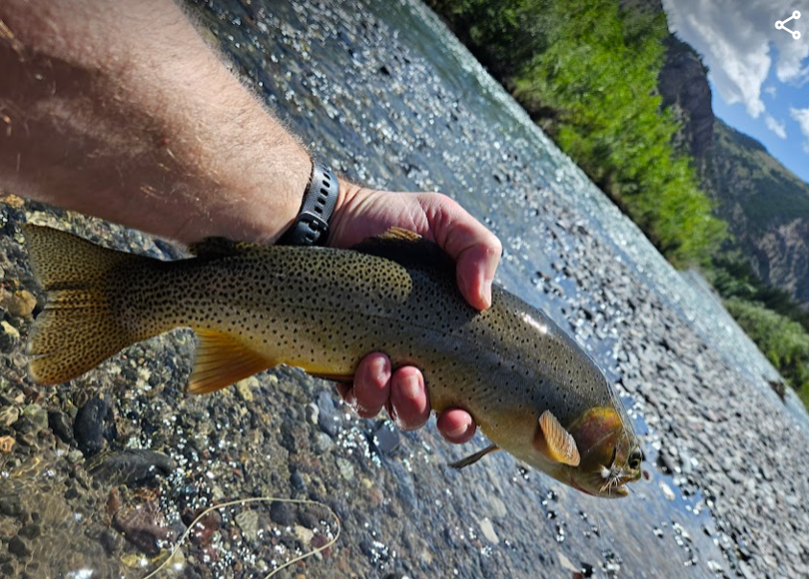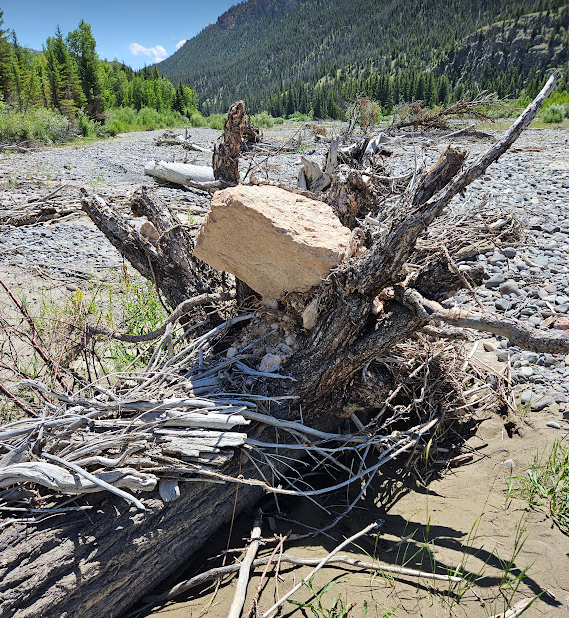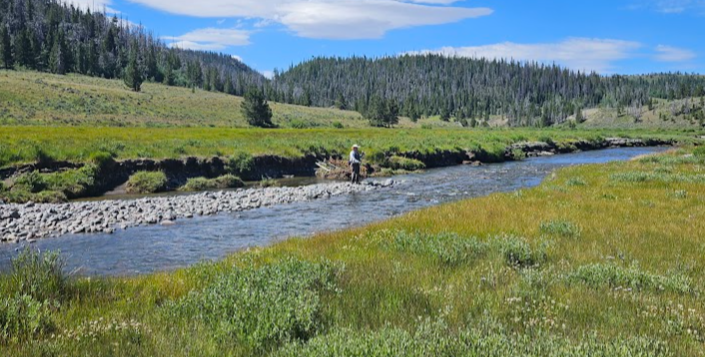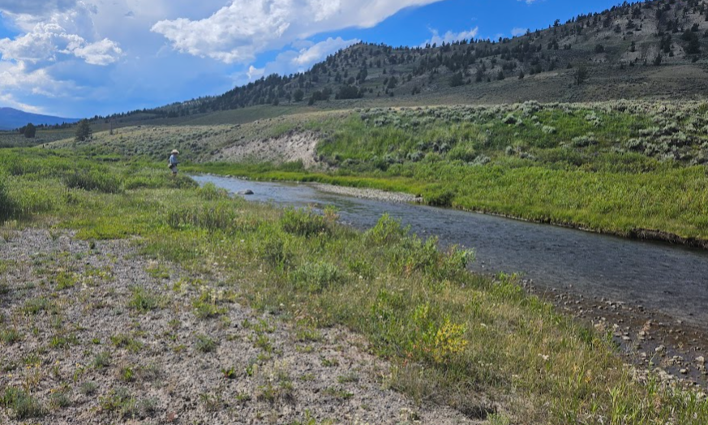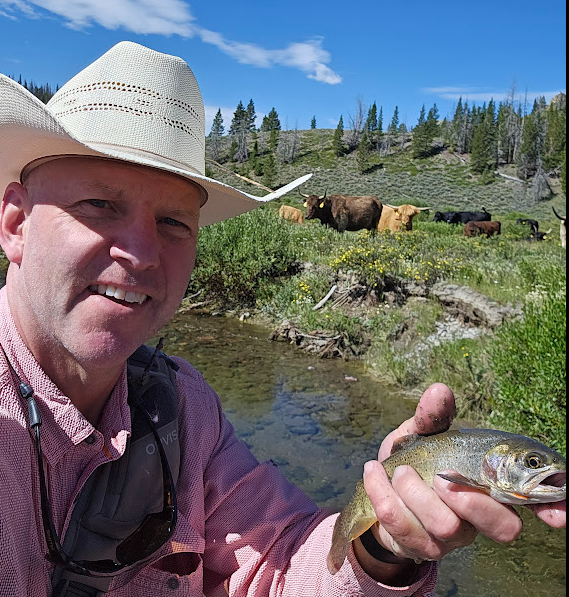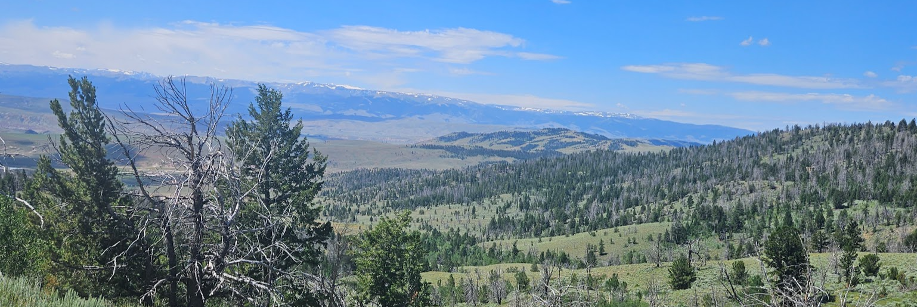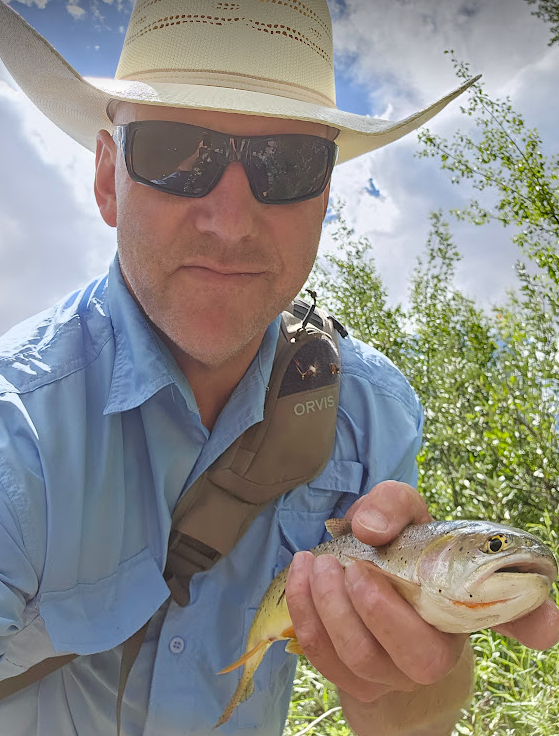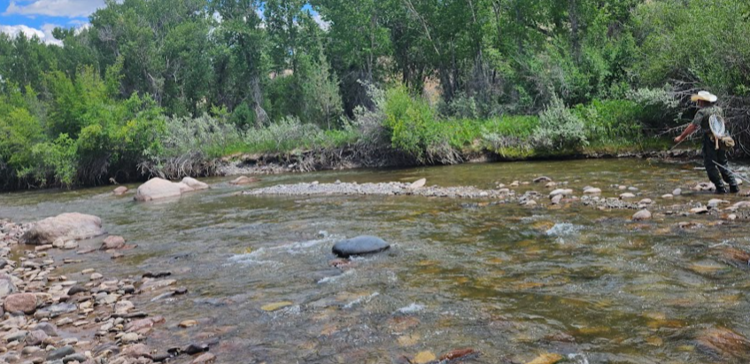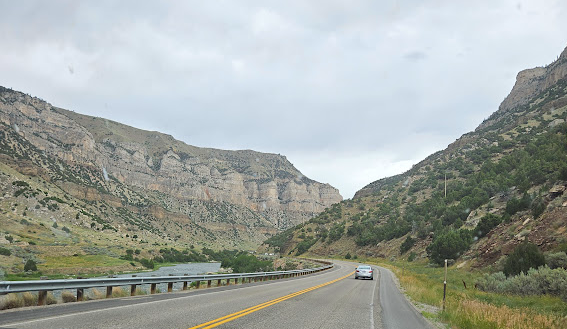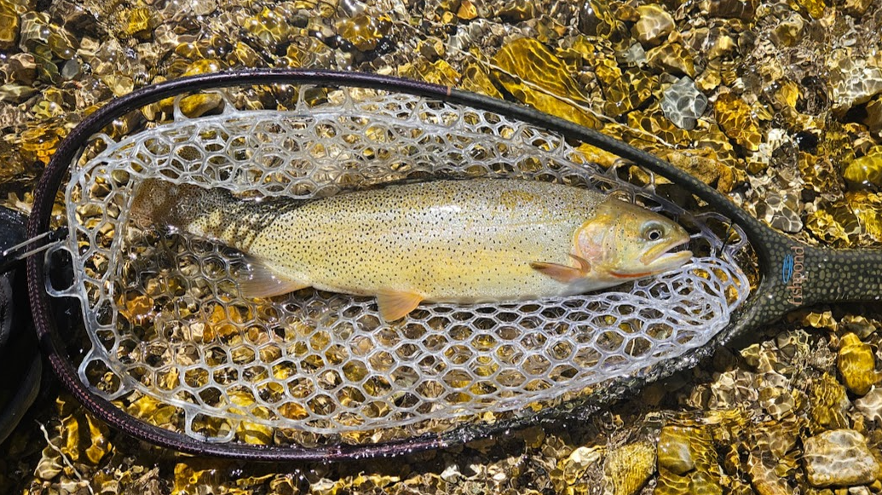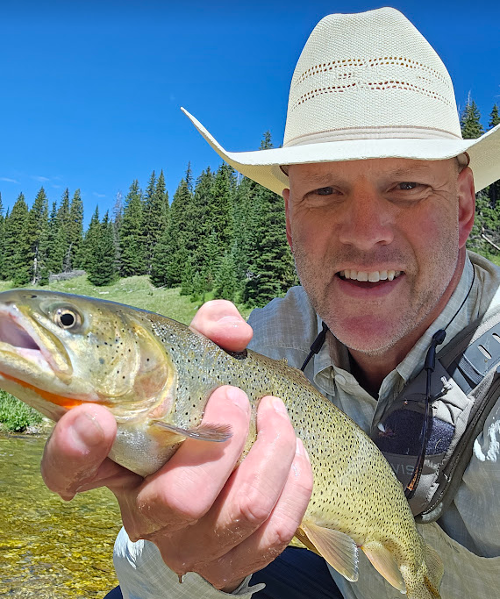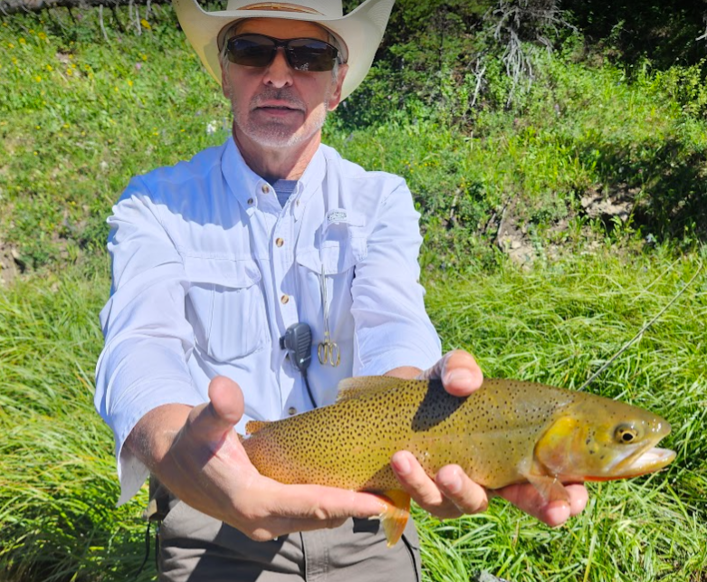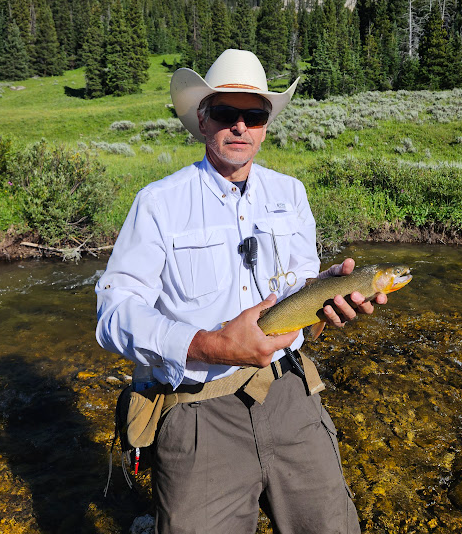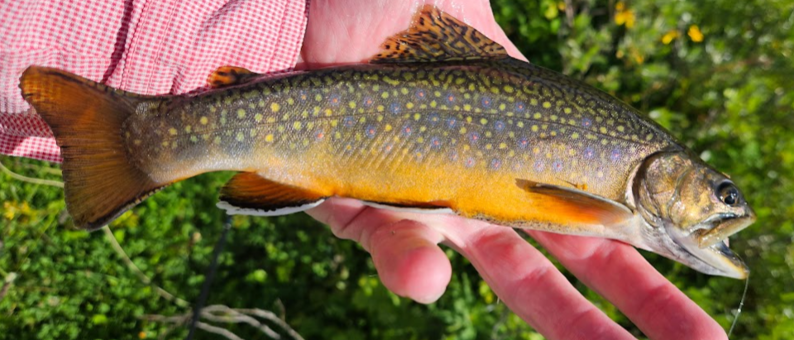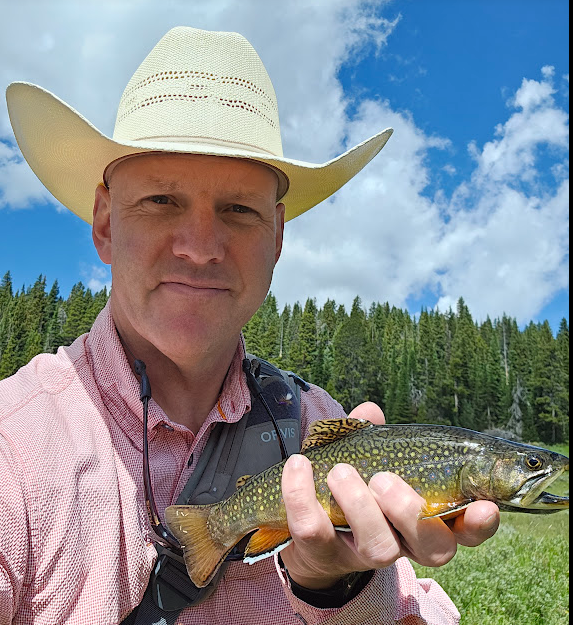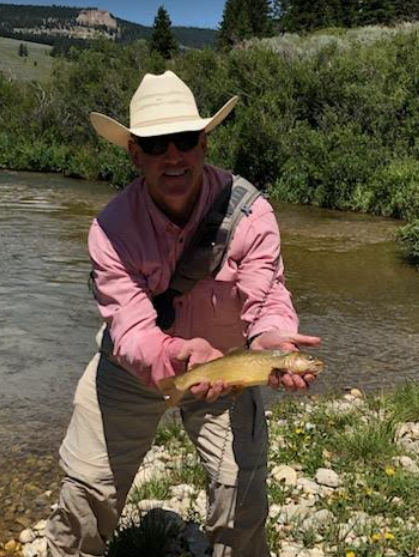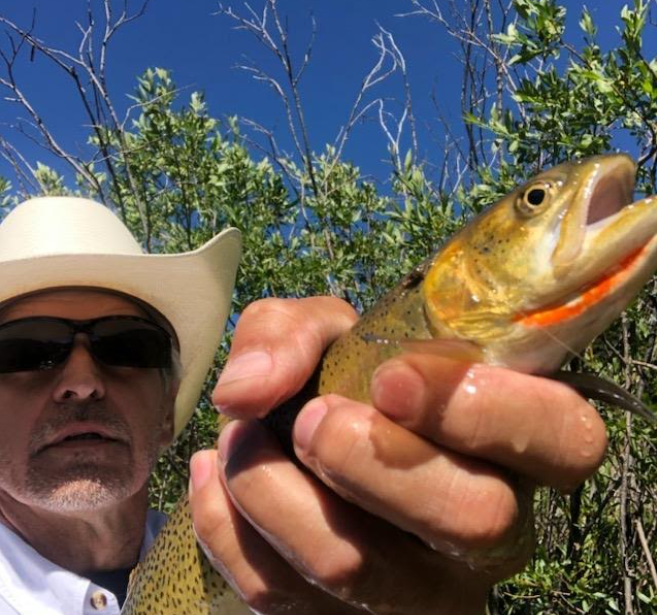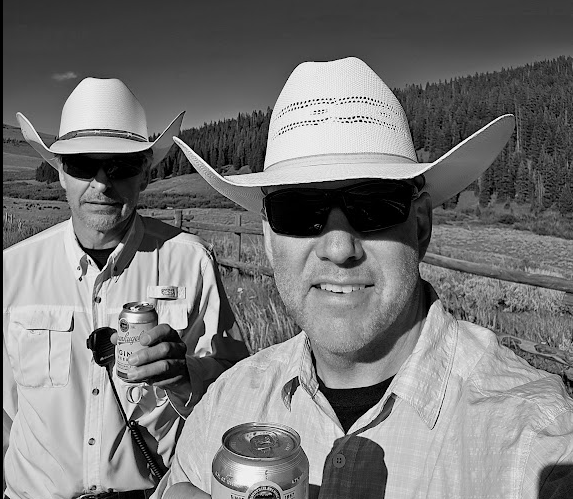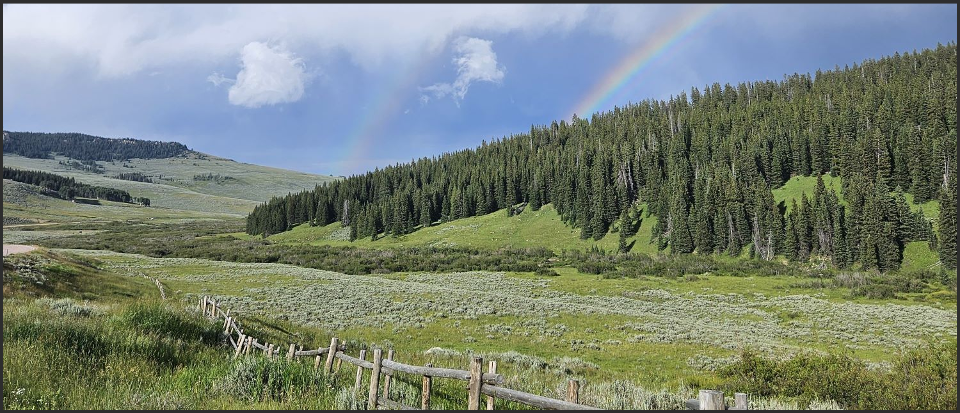
|
Wyoming 2023 I was fortunate enough to spend a week with two dear friends, Charlie and Fred, in Wyoming fly fishing for five days on various streams throughout the state. We had started planning our route in the fall of '22 and spent the winter looking at maps, Googling streams, talking to Wyoming fisheries, and pinning possible spots on OnX (an invaluable tool for fishing in another state). We went with a solid plan and a pile of access pins dropped on the OnX app. We all arrived in the Wind River range on Sunday and got a brief outing in just inside national forest boundaries for a few hours. The water was low and warm (for my Midwestern standards), so the going was slow, only a few browns, rainbows, and whitefish. The scenery, however, was well-worth the drive.
We had two cars on the trip, so we routed a point A to point B routes to fish one direction and save time and energy walking in and out of the streams we fished. Monday morning started out sunny with a few clouds. We hiked in along a private/BLM boundary and fished up through the BLM to the exit vehicle. We carried bear spray and handguns, but the nearby gravel road was well-traveled, so I never felt like we had to be wary of any run ins with the local grizzly bears. Fishing was slow early. Western streams at 7000 feet often take a bit to warm up. I managed a few whitefish and small cutties nymphing while the other duo tinkered with and assortment of dries and droppers. Around 11:00, the switch came on, and we all started catching Yellowstone cutthroats on dries routinely.
While a size 14 parachute Purple Haze was productive throughout the week, I opted for a yellow parachute rubber legged Stimie and did very well. I tinkered with a variety of floatants, but the powder silicone was easily the best at keeping flies dry and riding high on the drift, which the fish preferred.
The river had come down significantly since earlier in the month, when big snowpacks had dumped a pile of much-needed snow in the West. It was relatively easy to wade: the rocks weren't slippery, so you just picked a manageable place to cross. I didn't carry a wading staff at all the entire trip. We regrouped at the second vehicle, had some lunch, rehydrated a bit (I can't stress enough the importance of drinking lots of fluid if you go West), and opted for a two track, unmaintained road over a pass to get higher up along the stream we were fishing. The drive took 20 minutes and the going was slow, but we managed. We ran into another vehicle on the way out, who just happened to be a local fly fishing guide. We gathered some valuable intel and understood, without saying it, that the river we were traveling to was well-worth our time if a guide was going to take that brutal drive into the wilderness with clients. Our hunch turned out to be a hit. We didn't fish too long as we got there late in the afternoon, but we caught enough really nice cutties in that window to convince us to come back the next day.
We decided to make the trek back into the same spot the next day, but even an early start wasn't enough to run into traffic at the dead end road when we go there. The guide we ran into the day prior was already parked as was another vehicle and several side-by-sides, a common occurrence out West in the mountains a mode of transportation.
The worst part was the weather. While we had cutty loving high sun, we were also fishing into a 35 mph headwind that made casting virtually impossible. Fishing and catching were tough for out group that day, but we managed a few on top.
I took this picture on the walk back downstream at the end of the day, showing the power of spring run off.
The next day we decided to hit a few other streams, neither of which was very productive. We managed a few fish here and there, but nothing of significance. The best part was the drive way up the peak on a two track road to fish a high mountain meadow section.
Yes, those are Texas longhorn cattle grazing at 9000 feet. The drive out:
The river was a little off color and low, a product of massive irrigation to produce hay for wintering cattle.
The next morning, we split up with Fred staying one more night in the area to fish some smaller streams we had pinned prior, then off to a Nature Conservancy cabin on the Sweetwater before heading home to Colorado. The Sweetwater location was a bust - slow moving water and 70 degree surface temperature was not conducive to much action. Charlie and I drove west and then north towards Thermopolis and the massive valley that the Wind/Bighorn flows. It's an impressive valley with ridiculously large boulders littered throughout. Thermopolis is a decent town, complete with a variety of fly shops and armadas of drift boats everywhere. This wasn't a float trip (they never are), so we passed on through and headed north.
We continued north and made the climb up into the Big Horns via Greybull and Shell. It's an awesome drive if you are the passenger as the scenery never disappoints. We got on the water around 3:30 and fished until 6:00. High sun and upper 60's at 8000 feet replaced the heavy rains and muddy water of the Wind River that we left behind. I nymphed exclusively, some sight fishing, and some general drifting. Charlie fished a dry, and we both had good success. Sorry for some of the poor pictures, but it's hard to get a selfie and get the whole fish in the screen sometimes.
We got up the next morning and headed up to higher elevations, to a meadow reach I was aware of but had not fished before. Charlie had fished it in the past; the MO for the morning was small dry flies to a mixed bag of brookies and Yellowstone Cutts, but it was predominately brook trout.
We fished up for a few hours until we ran into other anglers, so we pulled the pin on that spot and went back down for the last fish of the trip. The stream was not as productive as the prior day, but we still caught a few nice fish.
On our way off the water we had a close encounter with a pair of moose, a relatively common occurrence up there, but an awesome sight nonetheless.
As has been prior tradition, we celebrated at the end of the day with a cold Leinie's. A few final random thoughts and observations: The drive to Wyoming isn't that bad. What is bad? The drive from Casper (stop at the Ugly Bug fly shop downtown) to the Winds. Not much of anything to see for several hours. I fished a Loomis NRX+ 10 foot, 4 weight rod with SA line almost exclusively and loved it. 9' leaders and Rio 4.5X tippet was my typical set up. If you like beer, there are plenty of options at just about any grocery store or gas station (Minnesota ought to try doing that). The Wind River line and Blacktooth brewing are personal favorites. Elk and bison are common menu items throughout Wyoming. I like both, but a medium cooked elk burger is tough to top. OnX: If you have never subscribed for an out West fishing adventure where you have any question about state land, private land, BLM, etc., this is a MUST HAVE. Plus it works offline. Floatant: I dabbled with Loon Fly Dip on my dries. It works very well if your fly is completely dry prior to use. After that, Shimizaki Dry Shake to keep your dries high in the water column was my go to. Wind: there is a lot of it, almost daily by noon, so be prepared. Sun and Water: Dry climate with 28% humidity and sunshine - always sunscreen up and deliberately drink lots of water. I drank an LMNT prior to fishing and carried water with me at all times, even when it wasn't that hot out. Two Track Roads: We had vehicles with enough clearance and four wheeled drive to get us in and out on several streams. Without it, I wouldn't have even tried to drive back in there. Banker's Hours: Most of the time, the fishing didn't get real good until at least 11:00AM. The ride home: Sheridan has a fantastic downtown. Fly Shop of the Bighorns is worth visit. A stop in Buffalo to the Sports Lure downtown, also, does not disappoint. Until next year, thanks again, Wyoming.
|
